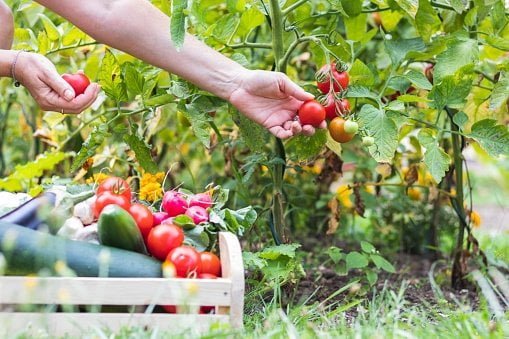Step-by-Step Guide on How to Grow an Organic Vegetable Garden – Organic gardening is an eco-friendly and natural approach to cultivating fruits and vegetables, free from harmful chemicals and pesticides. By growing your own organic garden, you not only contribute to the health of the environment, but also to your personal well-being. The vegetables harvested from organic gardens are often richer in essential nutrients, vitamins, and minerals, providing a fresh and healthy alternative to commercially grown produce.
In addition to the health benefits, organic gardening also presents an opportunity to save money on groceries and reduce your carbon footprint. By eliminating the need to purchase produce from supermarkets, you reduce the amount of plastic packaging waste and carbon emissions associated with the transportation of goods. Moreover, growing your own vegetables is a great way to connect with nature, promote physical activity, and even improve mental health.
People Also Read: Essential Tips On How To Keep Your House Clean (Enough)
Here are the step-by-step guide on how to grow an organic vegetable garden:
1. Plan Your Garden
Before you start digging, take some time to plan your garden. Consider the amount of space you have available, the amount of sunlight your garden receives, and the type of vegetables you want to grow. Make a list of the vegetables you want to grow and create a garden layout plan.
2. Prepare the Soil
The soil is the foundation of a healthy garden. Start by removing any weeds, rocks, or debris from the area where you plan to plant. Then, use a garden fork or tiller to loosen the soil and improve the drainage. You can also add organic matter such as compost or well-rotted manure to enrich the soil and improve its texture.
3. Plant Your Vegetables
Choose high-quality organic vegetable seeds or seedlings from a reputable supplier. Follow the planting instructions on the package or consult a gardening book for more information. Make sure to plant each vegetable at the appropriate depth and spacing. Water the seedlings immediately after planting and cover them with a layer of mulch to retain moisture and prevent weeds.
4. Water and Fertilize Your Garden
Water your garden regularly, especially during hot and dry weather. Aim to keep the soil moist but not waterlogged. Use a soaker hose or watering can to avoid wetting the leaves, which can promote fungal diseases. You can also fertilize your garden with organic fertilizers such as compost, fish emulsion, or bone meal. Apply the fertilizer according to the instructions on the package or consult a gardening expert.
5. Control Pests and Diseases
Prevention is key when it comes to controlling pests and diseases in an organic garden. Use physical barriers such as row covers or netting to keep insects away from your plants. Plant companion plants that repel pests or attract beneficial insects. If pests or diseases do occur, use organic methods such as handpicking, spraying with insecticidal, or using organic fungicides.
6. Harvest Your Vegetables
Harvest your vegetables at the peak of their ripeness for the best flavor and nutrition. Use sharp scissors or pruners to cut the vegetables off the plant. Avoid pulling or twisting the vegetables, which can damage the plant and reduce its yield. Rinse the vegetables in cold water and enjoy them fresh or store them in the refrigerator for later use.
People Also Read: 7 Ways to Improve Your Garden & Landscaping on a Budget
In Conclusion
Growing an organic vegetable garden is a rewarding and fulfilling experience that can provide you with fresh and nutritious produce all year round. By following these six steps, you can create a healthy and sustainable garden that is beneficial for both you and the environment.




